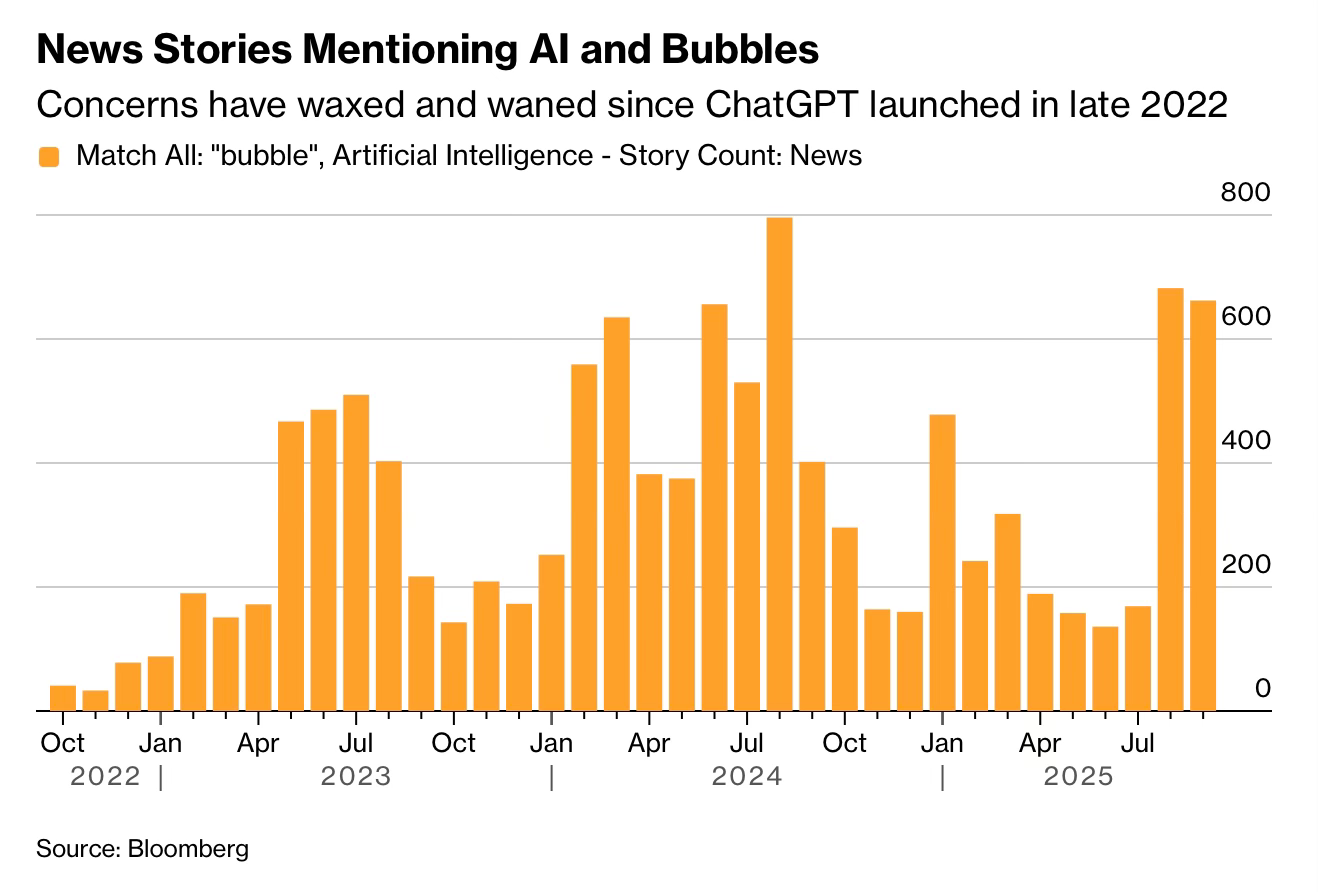ChatGPT ironically tracks the AI bubble
Five charts to start your day
Whether you think we are in an AI bubble is subjective. Many people treat it as a foregone conclusion and draw parallels with the dot-com era. I lived through both and they are not the same.
The dot-com period was highly speculative. Investors priced in the future as if it had already arrived. You could argue that today’s AI boom looks similar. To a point, yes, but there is a key difference. The firms and investors driving this cycle have stronger finances, and we have a tangible product in front of us: generative AI. Several of the leading companies in this space are producing substantial revenue and cash flow. That was rarely true in the late 1990s, when many internet start-ups were unproven and loss-making. Some giants did emerge, and the internet did transform our lives, though not quite as predicted. The same is highly likely to be the same with AI
So what can you trust? Warren Buffett has said interest rates act like gravity on asset prices. When rates rise, valuations based on distant cash flows are tested. Since the pandemic interest rates have risen and now they are set to decline again, and yet tech companies have seen their evaluation swell along with their AI innovations. Another lesson nags me from the run-up to the financial crisis. Expectations around earnings can stretch and then deflate quickly. Today’s tech leaders generate huge revenues, but that does not guarantee durability when conditions turn, which they can do in a broader credit crisis.
Our first chart asks whether there is a bubble, and whether the technology itself, generative AI, can be used to see it.
CHART 1 • ChatGPT ironically tracks the AI bubble
Talk of an AI bubble is not new, but this chart captures the mood in a clever way. Instead of showing profits or valuations, it tracks language. Bloomberg uses AI to analyse news and count how often AI and bubble appear together. In other words, it is measuring attention and anxiety.
There is a feedback loop here. Generative AI helped fuel the boom, and now the language it sparked is being used to track doubts about that same boom. Real money is flowing into chips, data centres and AI development, yet the pay-off is still uncertain.
We have seen this before. During the dotcom era, billions went into infrastructure while many firms burned cash without a clear path to profit. A few became Amazon and Google. Most vanished. The question now is whether AI follows the same script, with a handful of durable winners rising from a long list of expensive experiments.
What do you think? Are we looking at a bubble building, or the messy early phase of a long-term transformation?
Source: Bloomberg
To be honest with you, I have become rather fatigued at looking at AI charts. But at the same time I can't help but look at them. And so this is the general theme that I'm running with today with the other four charts in today's newsletter. They are worth looking at and I hope you do look at them. But, you'll need to be a paid subscriber to do so.




